Consult with our experts to pick your prefect rug delivered to your door step.
Or start with the one closest to your desire from our catalogue, we will provide you with all the possible options
Showing 1–9 of 507 resultsSorted by popularity
Or start with the one closest to your desire from our catalogue, we will provide you with all the possible options
Bakhtiar (or Bakhtiari) rugs originate from the Bakhtiari tribe and the villages under their influence in the Zagros Mountains, west of Isfahan in Iran. The Bakhtiari people are a pastoral nomadic group known for migrating seasonally across rugged terrain, and they have been weaving carpets for their own use and trade for centuries. The name “Bakhtiar” has become associated with rugs made in the Chahar Mahal va Bakhtiari region, which includes not only tribal weavings but also those made in settled communities by weavers often of Bakhtiari descent.
This region’s weaving history took shape particularly in the 19th and early 20th centuries as tribal leaders commissioned larger, more elaborate rugs for export, capitalizing on Western demand. The proximity to Isfahan also meant design influences sometimes flowed between the sophisticated city workshops and the Bakhtiari village looms. Culturally, these rugs are a product of a rich environment – the Bakhtiari tribe’s own patterns inspired by nature and rustic life, combined with Persian artistic motifs.
Traditionally, Bakhtiari nomads used their carpets in tents and homes for comfort and insulation, so durability was key. Over time, the Bakhtiari rug style became renowned as “the gardeners’ carpet” because of its famous garden motif design. Today, Bakhtiar rugs are celebrated as one of the most robust and substantial types of Persian carpets, with a heritage that reflects the hardy lifestyle and artistic spirit of the Bakhtiari people.
Bakhtiar rugs are most famous for their Garden of Paradise design, known as the Khesti (or Chesti) pattern. This design divides the field into a grid of squares or compartments, each filled with motifs like flowers, leaves, vines, or occasionally animals and urns, symbolizing the Persian ideal of a lush garden. Looking at a Bakhtiari garden carpet is like looking at an aerial view of a formal garden – each panel could represent a flowerbed or pond. Beyond the garden design, Bakhtiar rugs also feature bold medallion-and-corner layouts in some varieties, and others mimic neighboring Isfahan-style florals albeit in a more geometric, tribal manner.
Common across Bakhtiar designs are floral and vine motifs – you’ll see roses, blossoms, and tendrils throughout the patterns, often stylized rather than hyper-realistic. Many Bakhtiar rugs have a dense, busy design filled with life, reflecting the abundance of nature. The color palette is typically rich and earthy: deep brick reds, robust indigo blues, forest greens, golden yellows, and ivory are all commonly featured. One hallmark is a use of a warm, dark brown or almost black that outlines motifs, which comes from natural brown wool (often from the weaver’s own sheep). This outlining gives Bakhtiari designs a stained-glass clarity.
The borders of Bakhtiari rugs are usually multiple and elaborate, frequently with a main border showcasing continuous floral motifs (like a running vine with rosettes) flanked by smaller guard borders with simple repeating patterns. Overall, a Bakhtiar rug’s design is bold and hearty – much like the people who weave them. They aren’t shy rugs; they display a celebration of nature with vibrant color blocking and strong, straightforward drawing. Even when influenced by refined city patterns, a true Bakhtiari rendering will be slightly more angular or naive, which adds to its charm. The result is a carpet that can dominate a room with its garden panels or large central medallion, giving an impression of opulence and abundance.
Bakhtiar rugs are renowned for being among the most durable Persian rugs, and much of that comes down to their materials and construction. The Bakhtiari weavers use exceptionally strong wool for the pile – often from their own highland sheep. This wool is usually high in lanolin and tightly spun, which yields a pile that is dense and somewhat coarse to the touch but extremely resilient. In fact, Bakhtiari wool is sometimes described as “hard” wool, contributing to the nickname “Iron Rug of Persia” for Bakhtiar carpets. The warp and weft are typically cotton in later and larger Bakhtiari pieces, which adds tensile strength and helps the heavy rugs keep their shape.
However, some tribal Bakhtiari weavings (smaller or older ones) might use wool foundations. The knotting in Bakhtiar rugs is generally the symmetric Turkish knot, tied very tightly. Knot densities range from medium to moderately fine, about 120,000 to 350,000 knots per square meter on average. While not ultra-fine, this density combined with thick wool creates an incredibly firm, compact pile.
When you press your hand on a Bakhtiari rug, it often feels stiff and stands up on its own – a testament to its tightly packed knots and quality wool. The pile height is usually medium to thick. Bakhtiari weavers are known to pack the wefts tightly and beat the knots vigorously during weaving, compressing the pile so much that it becomes very tough (this is one reason these rugs are so heavy). Natural dyes have been traditionally used: madder for red, indigo for blue, walnut or oak for brown tones, etc. This yields rich, saturated colors that age beautifully.
The sides of Bakhtiar rugs are often reinforced with a thick overcasting, and the ends are secured with robust kilim (flat-woven) selvage or extra weft shoots, to protect against wear. All these aspects – hardy wool, dense symmetric knots, strong foundation – come together in the Bakhtiari rug, making it a benchmark for durability. These rugs were built to endure life on the move or in village homes with many occupants, and many an antique Bakhtiari survives today with surprisingly little wear to show for a century of use.
Bakhtiar carpets, with their thick, sturdy feel and lively patterns, are best suited for spacious rooms where their grandeur can be appreciated and their robustness put to good use. Thanks to their often larger sizes and bold designs, they excel as statement pieces in living rooms or dining rooms. A Bakhtiari rug with the garden motif, for example, becomes a conversation starter in a living room – its panel design draws people in for a closer look, almost like a tapestry on the floor.
These rugs can handle the weight of heavy furniture, so don’t hesitate to place that solid wood coffee table or a set of sofas on a Bakhtiari; it won’t buckle or show pressure marks easily due to its dense pile. In dining rooms, a Bakhtiar under a table is practical because its busy floral patterns can conceal the occasional spill or crumb until cleanup, and the durable wool can take the movement of chairs in stride.
Bakhtiari rugs are also a top choice for entry halls or large foyers in grand homes – traditionally in Persian houses, a grand Bakhtiari carpet might greet guests at the entrance, demonstrating both wealth and hospitality with its vibrant garden imagery. Because they are quite thick and insulating, Bakhtiari rugs are wonderful in cold climates or stone-floored houses, adding warmth underfoot. They are less often used in small bedrooms or tight spaces; their scale and heft favor open areas.
However, a medium-sized Bakhtiari with a central medallion could certainly anchor a master bedroom, lending a regal touch. When designing a space, consider that Bakhtiar rugs often carry many colors – you can pull accent hues for your pillows, drapes, or wall art from the rug’s palette to create a harmonious look. And don’t shy away from placing a Bakhtiari in high-traffic rooms – these rugs are known to handle “above-average stress” very well.
For example, in a busy family living room, kids can play on it, and pets can lounge, with minimal worry about wear. The rug’s thickness also provides a comfortable cushion for sitting on the floor. In summary, anywhere you want a rug that marries decorative richness with hard-wearing utility, a Bakhtiar Persian rug is a fitting choice. Its ideal domain is the heart of the home – places where people gather and the rug’s beauty and strength can be enjoyed daily.
Bakhtiar rugs often provide outstanding value given their size, longevity, and the amount of craftsmanship involved. Because these rugs are typically large and use a lot of high-quality wool, their pricing on the market reflects that substantial presence, but they are not as expensive per knot or per square foot as the silk or city rugs of equivalent size. A good large Bakhtiari (say 9×12 feet or larger) woven mid-20th century might range from a couple thousand to several thousand dollars, depending on condition and design complexity.
Newer production Bakhtiari-style rugs are available too, often at moderate prices, but the finest vintage pieces – especially those with the classic garden design – might command a premium for their desirability. Antique Bakhtiari rugs (over 100 years old) can be quite valuable, particularly if they are well-preserved, because collectors admire their natural dyes and the patina that comes with age. However, even well-worn Bakhtiaris can fetch good prices simply because they remain serviceable; a century-old Bakhtiari often still has plenty of pile left, which is a testament to their durability.
From a value perspective, a Bakhtiar rug is an investment in something that is built to last. The phrase “buy it for life” applies – these rugs can easily outlive their buyers and become family heirlooms, making the initial cost spread over generations. Their resale value remains stable because there’s always demand for sturdy, large Persian rugs with beautiful designs. In comparison to other Persian carpets, Bakhtiar rugs are often considered underappreciated gems: they are as robust as Bijar rugs, and larger examples can be as impressive as Kashan or Kerman rugs in design, yet they sometimes sell for less than those types, giving savvy buyers a chance to own a magnificent piece at a lower cost per square foot.
Additionally, when looking at value, consider maintenance – Bakhtiari rugs, thanks to their toughness, don’t require as delicate handling or frequent restoration, which can save costs over time. In the context of durability and visual impact, you could argue Bakhtiari carpets give you “two rugs in one”: the durability of a utilitarian piece and the beauty of an artwork. For anyone wanting a rug that holds up to heavy use and still looks stunning, investing in a Bakhtiar carpet is money well spent. It’s a rug that can truly be used and enjoyed daily without worry, making its cost per use drop to pennies over a lifetime.
Buying a Bakhtiar rug is an excellent decision for those who desire a Persian rug that combines opulent design with rugged durability. If you’re searching for a carpet that can be the centerpiece of a room, a Bakhtiari with its famed garden motif or grand medallion will certainly deliver that “wow” factor. Prospective buyers often shop for Bakhtiar rugs because they’ve heard of their reputation: these rugs are often described as the most robust of Persian carpets, which is a huge selling point.
You’re not just buying a pretty rug; you’re buying peace of mind that this gorgeous floor art can handle real life – spills, parties, pets, and all. This makes Bakhtiar rugs particularly attractive to families and those who entertain frequently. In the world of interior design, these rugs are a go-to for adding rich color and pattern to large spaces. When you buy a Bakhtiari Persian carpet online or in a showroom, you often get a story along with it – perhaps it’s woven in a specific Bakhtiari village or by tribal hands in the Zagros; this narrative adds allure, knowing your rug has cultural significance. For the investment-minded, a well-chosen vintage Bakhtiari can hold or even increase in value as truly good pieces become rarer on the market.
From an SEO perspective, phrases like “shop Bakhtiar Persian garden carpet” or “durable Persian rug for dining room” might lead one to these rugs, reflecting exactly why people buy them: they’re stunning and sturdy for spaces like dining areas, halls, or living rooms. A Bakhtiar rug also appeals to buyers who want something traditional yet not overly formal. There’s a certain earthiness to a Bakhtiari – the hand of the weaver is evident – which brings warmth to a home.
In pitching why to purchase one, a seller would highlight that each Bakhtiari rug is a piece of tribal heritage that also happens to be one of the best “user-friendly” high-end rugs you can own. Many owners of Bakhtiar rugs will attest to how these carpets “wear like iron” and still draw compliments decades on. So, in summary, you should buy a Bakhtiar rug if you want maximum impact and maximum longevity. It’s a rug that fulfills both the decorative dreams (with its lush patterns) and practical needs (with its toughness) of homeowners. When you unroll a Bakhtiar in your home, you’re making a statement – about your taste in fine, culturally rich decor, and your savvy in choosing a rug that will serve your household reliably for ages.
Taking care of a Bakhtiar rug will ensure its dense wool and vivid colors remain in top condition. Here’s how to maintain this “iron” carpet:
Regular Cleaning Routine: Vacuum your Bakhtiari rug regularly, at least once a week, to remove dust and grit from its thick pile. Use a vacuum without a beater bar or set to a higher pile setting to glide over the rug without stressing the fibers. Despite its toughness, avoid catching the fringe in the vacuum to prevent unraveling.
Rug Rotation: Due to their heavy weight, rotating a large Bakhtiar rug can be a task, but try to rotate it 180° once a year (perhaps get help for big rugs). This promotes even wear, especially if one end is under a window with sun or in a more walked-on area. Even a partial rotation or shifting furniture placement occasionally can help distribute foot traffic.
Protect from Moisture and Moths: The dense wool of Bakhtiari rugs is somewhat less appetizing to moths (because it’s often high in lanolin and tightly packed), but it’s still wise to ensure the rug is in a well-ventilated area. Avoid placing potted plants directly on the rug – moisture can seep through and, if unnoticed, cause mildew or weaken the foundation. If storing a Bakhtiar rug (or leaving it unused on the floor for long periods under furniture), consider using cedar blocks or moth repellents around it, just in case.
Spot Cleaning: The robust dyes in Bakhtiari rugs are typically quite stable, but always test before heavy cleaning. If you spill something like wine or juice, immediately blot with a clean, absorbent cloth (the thick pile will soak up liquid slowly, giving you a chance to catch it). Then use a damp cloth with a mild soap solution to gently clean the spot. The busy patterns can hide minor stains well, but it’s best to address them to avoid any long-term discoloration.
Professional Washing: Thanks to their heavy build, Bakhtiari rugs can handle professional washing very well. It’s recommended to get a full professional rug wash every 5-10 years, depending on traffic. Professionals will thoroughly clean and revive the pile (which can get compacted with dust over time). Washing will also refresh the natural wool oils, bringing back some sheen. Given the size of many Bakhtiar rugs, this is not a DIY job – trust experts with experience in handling large Persian rugs.
Maintain the Sides and Ends: Periodically inspect the edges of your rug. The side overcasting and end bindings take the brunt of wear (especially from vacuuming or foot snagging). If you see any sections where the side cord is coming loose or fringe is wearing down to knots, take the rug to a repair service. Early repair of these areas prevents the pile from unravelling and is much cheaper than fixing later extensive damage.
By following these care tips, your Bakhtiar rug will remain lush and sturdy through years of use. Remember that these rugs were made to endure – a bit of routine care simply ensures they continue looking their best while they do so. With minimal but mindful maintenance, your Bakhtiari can easily become a multi-generational treasure.
Bakhtiar rugs make a strong decorative statement and thrive in settings where their rich design can be appreciated. Here are some great ways to incorporate a Bakhtiari rug into your home:
Grand Living Room: Lay a large Bakhtiar rug in a formal living room or parlor. Paired with classic furniture (think Chesterfield sofas, polished wood tables, or even ornate antique pieces), the rug’s elaborate garden or medallion pattern becomes the room’s masterpiece. Add throw pillows or drapery that echo one or two of the rug’s colors (such as deep navy or maroon) for a pulled-together look.
Dining Hall Elegance: In an expansive dining room, especially one with a long table that seats many, a Bakhtiari carpet underneath creates an atmosphere of lavish hospitality. The rug’s sturdy wool will tolerate chair movement. Choose a rug size that generously accommodates the table and chairs even when pulled out. The floral abundance underfoot will complement a centerpiece of fresh flowers or a chandelier above, enhancing that “feast in a garden” feeling.
Rustic Chic Cabin or Lodge: Surprisingly, the earthy tones and bold geometry of some Bakhtiari designs can match well with rustic interiors too. Imagine a mountain lodge with a stone fireplace – a Bakhtiar with warm reds, browns, and creams can anchor a seating area on a rough-hewn wood floor. The rug’s inherent warmth and storybook garden imagery add a cozy contrast to log walls or stone.
Hotel Lobby or Office Reception: For commercial or office spaces that want to convey luxury and worldliness, a large Bakhtiari rug in the lobby or reception area is ideal. Not only does it handle heavy foot traffic well, but it also immediately communicates elegance and comfort to visitors. Pair it with leather chairs and brass accents in a law office, for example, to set a tone of tradition and stability.
Open-Plan Modern Homes: If you have a modern, open-plan home with large floor space, a Bakhtiari rug can be used to define a zone with dramatic effect. For instance, place one in the living portion of a large open living/dining/kitchen layout. The juxtaposition of a very traditional, colorful rug against minimalist modern furniture (like a sleek sectional and glass coffee table) creates an eclectic style that’s very on-trend. It prevents the modern space from feeling cold and adds a focal layer of interest.
In each of these settings, a Bakhtiar rug doesn’t just quietly blend in – it steals the show in the best way possible. It brings with it an aura of Persian heritage and art. Whether your style is classic, rustic, or contemporary, there’s a way to feature a Bakhtiari that elevates the space. These recommended settings all share one thing: they allow the rug to be seen and admired, fulfilling the role it was meant for – to enrich the environment with color, pattern, and a sense of cultivated luxury.
As a family-owned Persian carpet shop, we bridge the gap between passionate collectors and skilled weavers, supporting both the artistry and the heritage of this timeless craft.
We guarantee fair prices for Original Authentic Persian Carpets
Address:
Shop No-GD 04, Dragon Mart 2 –
Dubai – United Arab Emirates
No.36 – 10th st. – Hafez Ave. –
Shiraz , Iran
Block 19 – Kooye Mohandesan –
Kish Island, Iran
Email info@letsgopersian.com
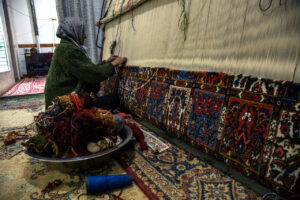
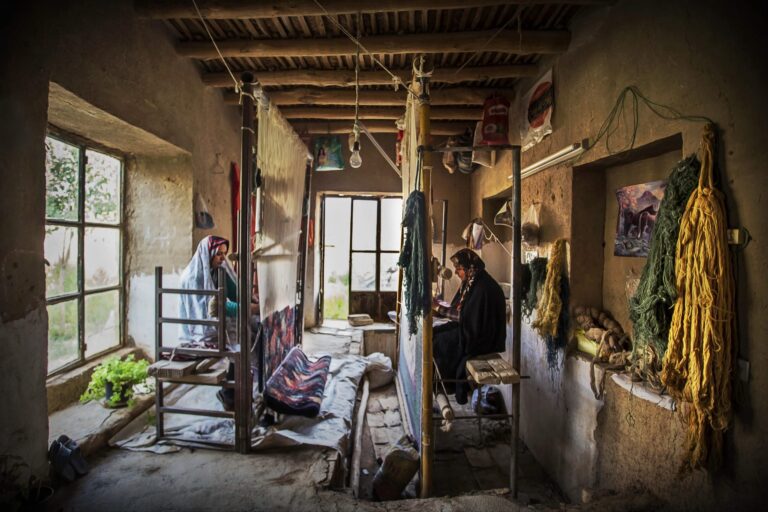
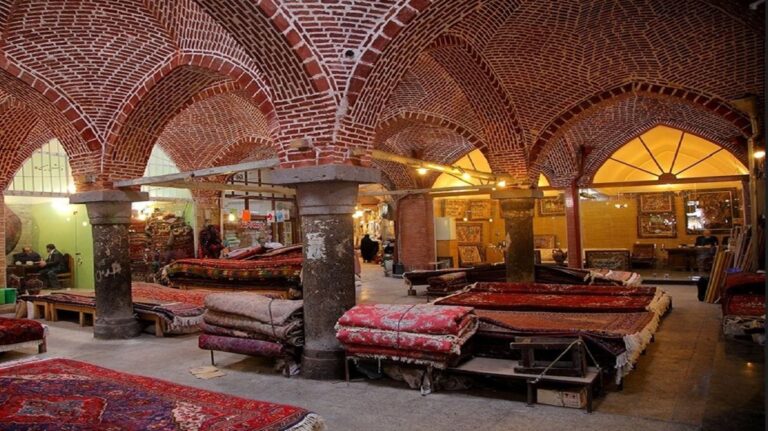
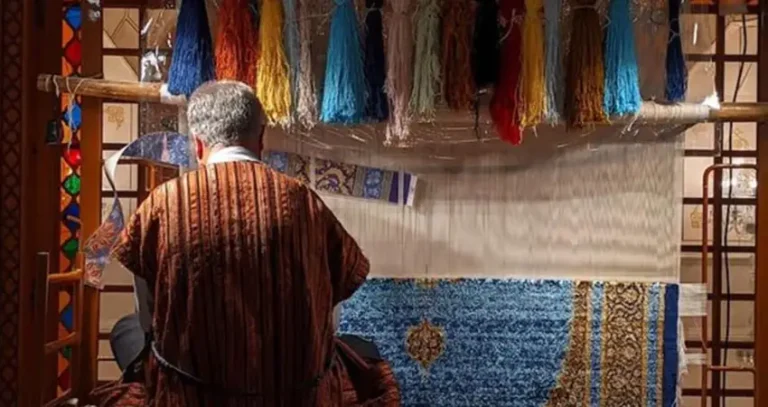
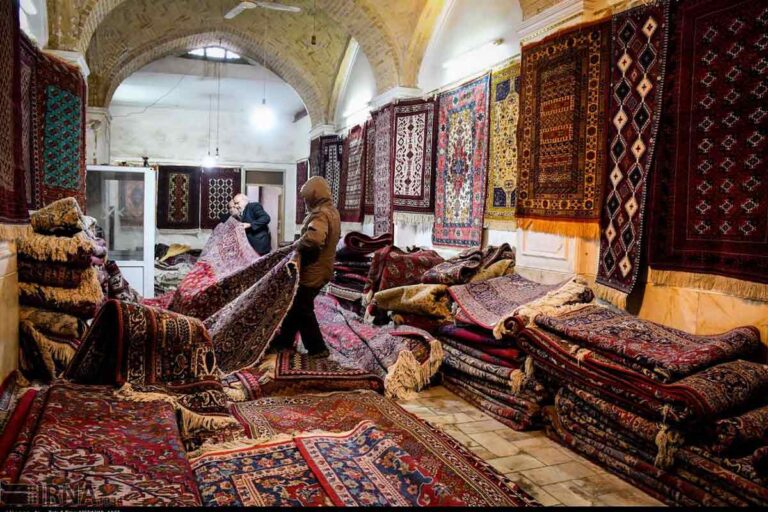
We bring you not just a carpet, but a masterpiece with a story — directly from the hands of Iranian artists to your home.
By working directly with artisans, we help preserve centuries-old traditions while offering our customers a chance to own a unique piece of original cultural heritage.